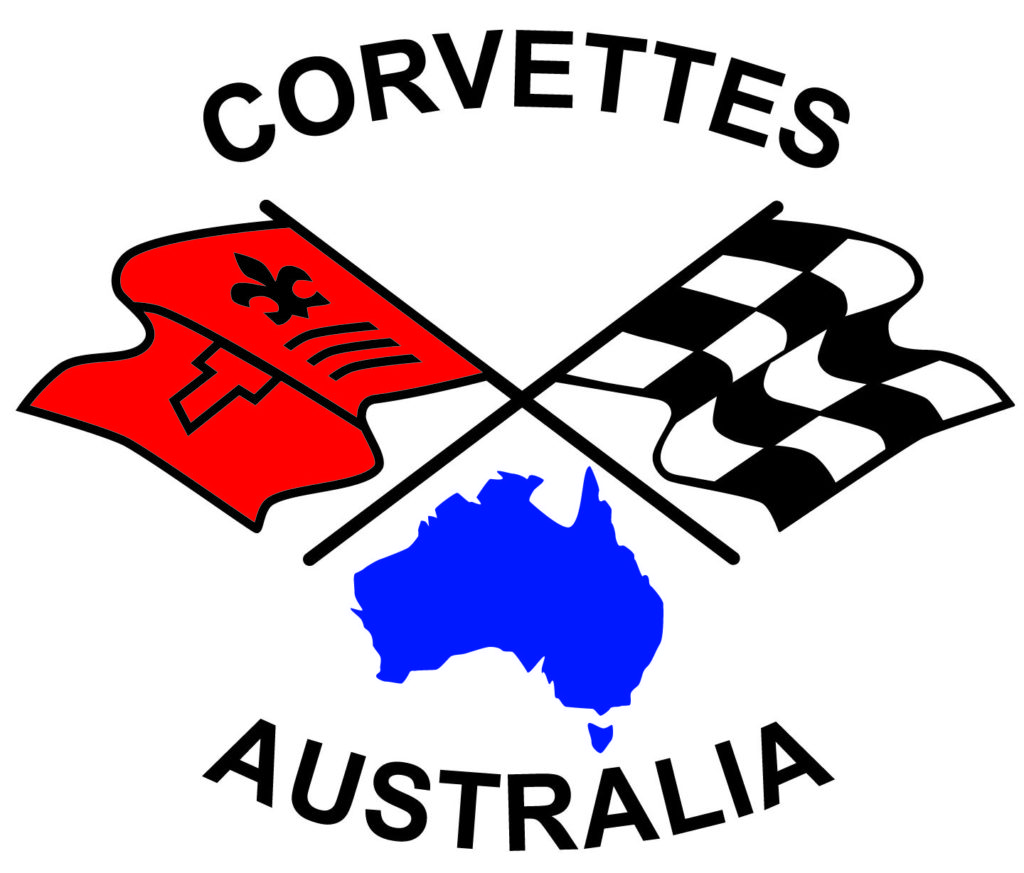Starting in 1974, the chrome bumpers were gone forever. While the 1973 Model Year car had retained the earlier chrome rear bumpers, in 1974 these were replaced by a trim, tapered urethane, body-coloured cover/fascia, covering an aluminium box-section impact bar which was mounted on two slider brackets. This system was designed to pass the US five-mph impact test. This provided a more modern shape that most enthusiasts approved of. For 1974 only, the rear fascia was made in two halves with a vertical join in the centre.
The base engine in the 1974 Corvette was the L48, which was rated at only 195 horsepower. Which was very similar to the 190 horsepower of the previous year. The L82 small-block engine remained at 250 horsepower, while the 454 big-block dropped by 5 horsepower to 270.
Other changes to the 1974 model were the addition of resonators to the exhaust system, improved radiator and shroud, and integrated lap/shoulder belts. 1974 also signified the last year for the true dual exhaust system and the last without catalytic convertors and most importantly, the last year of the big-block engine.
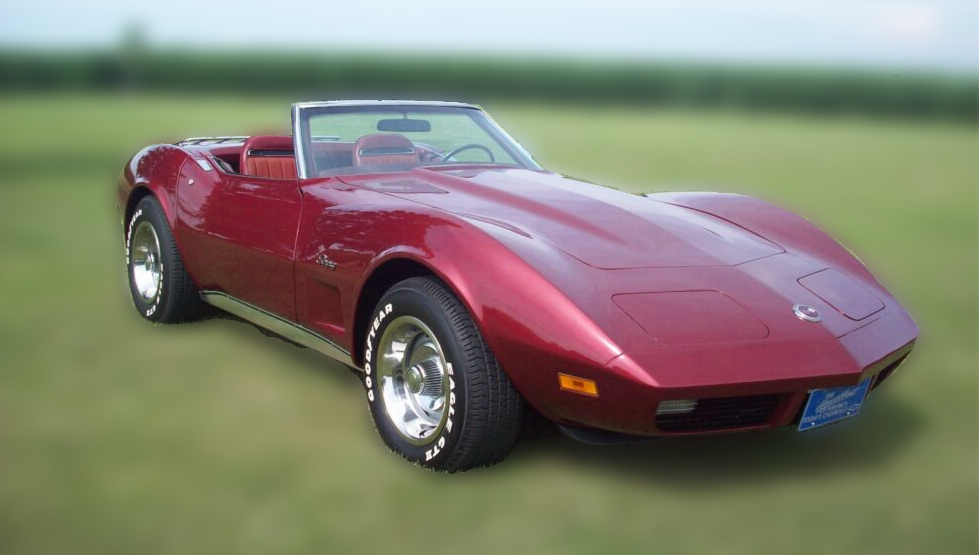
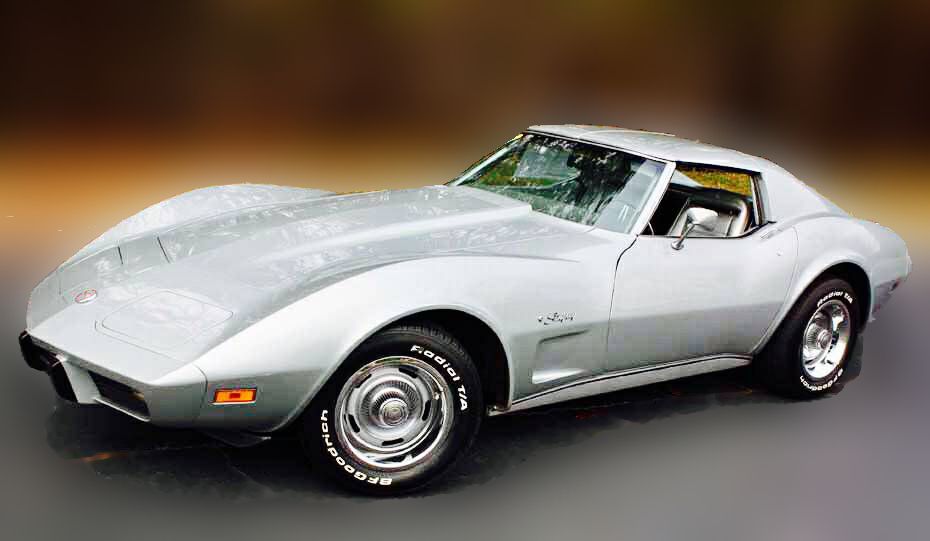
The 1976 model finally saw the introduction of the optional cast aluminium wheels. Although these were planned for 1973, it took this long the get the casting procedure correct. The Corvette name on the rear fascia changed from individual letters to an integrated name plate, although some cars still retained the individual letters.
Underneath the car, the footwells changed from fibreglass to pressed steel panels which shielded the catalytic convertors. They also weighed less and were quieter than the fibreglass. An unwelcome change was the use of the colour-keyed Chevy Vega 4-spoke steering wheel.
The L48 base engine had an improved power rating of 180 horsepower, with the L82 moving up to 210 horsepower. The air induction system was revised from the cowl induction system (drawing air from the high-pressure area at the base of the windscreen), to the ducting coming across the top of the radiator. This had an advantageous effect of lowering the induction noise in the cabin.
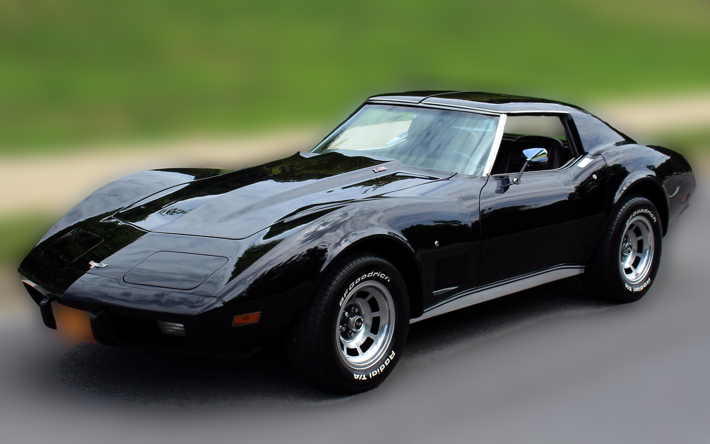
Appearance-wise, the 1975 Corvette’s rear fascia was tooled in one piece, while the impact bar beneath the fascia was redesigned with inner dampers. Simulated pads were added to the rear fascia, similar to the front. 1975 was also the last year of the convertible C3 Corvette. While GM expected that convertibles were gone forever, the convertible was able to make a return in the 1986 C4.
The 1975 Corvette’s base engine was the 165 horsepower L48, with only one optional engine available. This was the L82, which was rated at only 205 horsepower. The exhaust was no longer a true dual system, with the pipes routed to a single convertor, splitting again to dual mufflers and tailpipes. Although the Corvettes engine power had bottomed out this year, Corvette was still one of the fastest cars available in the US.
The engines were equipped with HEI ignition for the first time, and the cable driven tachometer was replaced by an electronic tachometer. The speedometers also included kilometre per hour markings inside the mph scale.
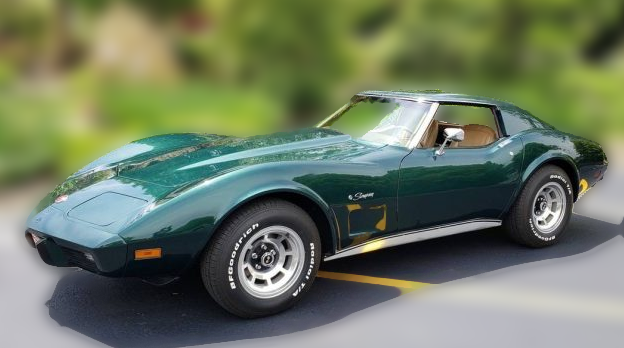
The 1977 Corvette saw the last of the vertical rear window on C3 Corvettes, with a big appearance change due for 1978. The “Stingray” script was removed from the front fenders, to be replaced later in the model year by crossed-flag emblems. Interestingly, the Black exterior colour was reintroduced for the first time since 1969, instantly becoming the third most popular colour behind White and Silver. Engines and their power ratings remained unchanged for the 1977 model year.
For 1977, Corvette gained a new steering column which placed the wheel closer to the dashboard. Leather seat trim became standard, and the centre console was redesigned to allow a wider range of radios and tape players. The gauges were also restyled. The new sun visors were now able to swing to the sides to provide sun protection from the side windows. A new three-spoke, leather wrapped steering wheel was introduced on the tilt-tele steering column option.
In 1977, GM added new creature-comfort features to the Corvette to make it more of a Grand Touring car. Power steering and power brakes became standard, the headlight dimmer and wiper/washer controls became steering column stalks, and cruise control became an option with automatic transmission. Other items added were dome light delay, headlight warning buzzer, underhood light, and low fuel light.
Corvette achieved the significant milestone of building the half millionth Corvette during the 1977 model year production.
